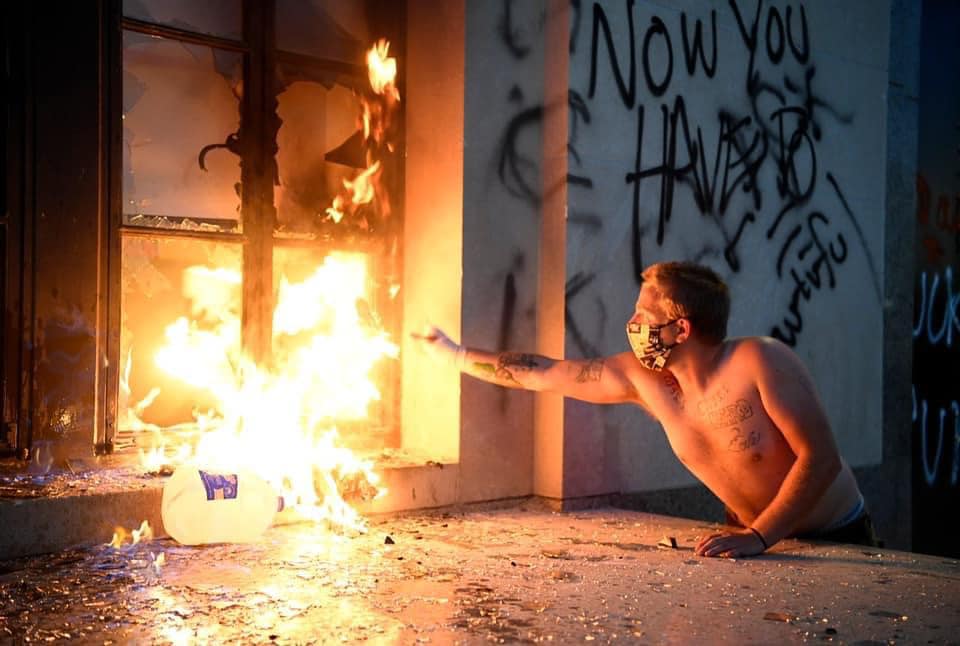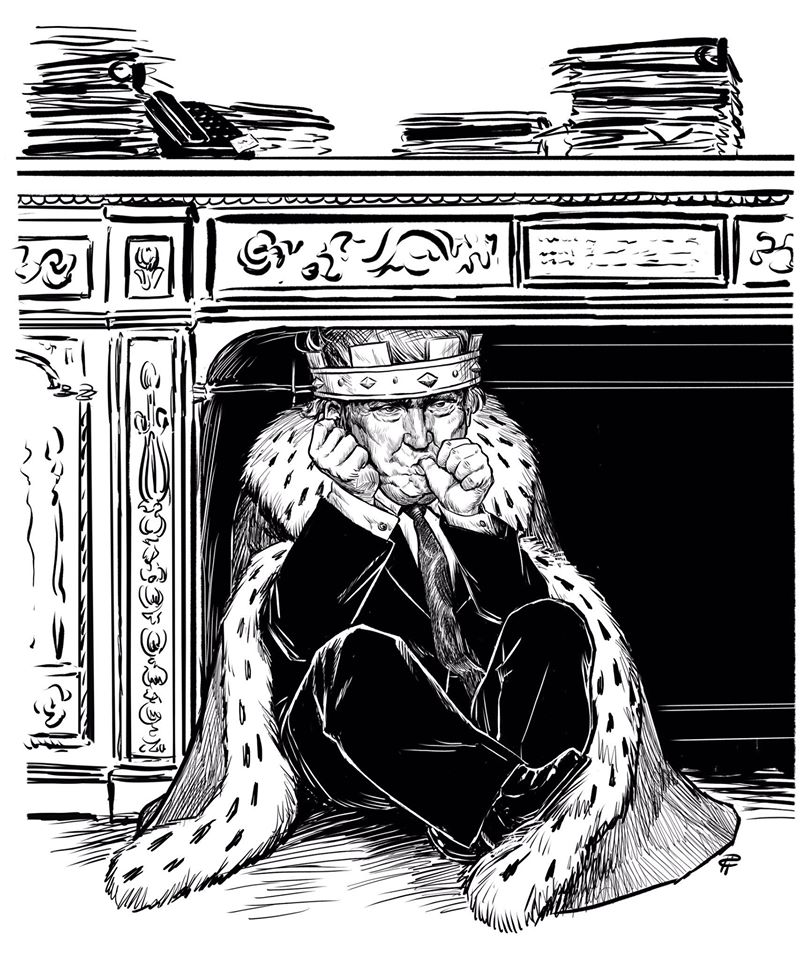Yesterday, Donald Trump gave a short speech in the Rose Garden in which he declared “My first and highest duty as President is to defend our great country and the American people.” And then he walked to St. John’s Episcopal Church in downtown Washington to be photographed by the church, holding a Bible (upside down and backwards).
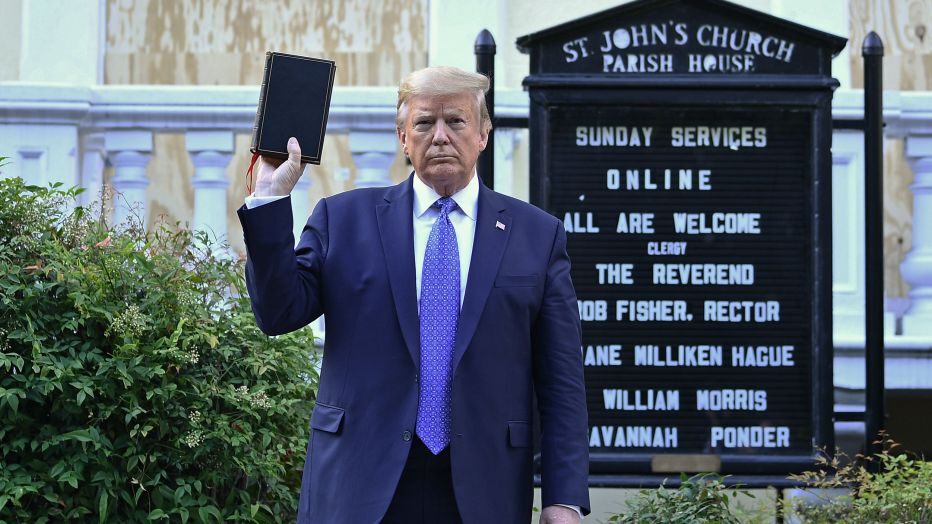
Police cleared a path for Trump by tear-gassing peaceful protesters — people Trump had just sworn to protect — in Lafayette Park. Several of the people tear-gassed were Christian clergy and seminarians who were offering support, bottles of water, and hand sanitizer to the demonstrators. Prior to Trump’s arrival at the church, police forcibly evicted at least one Episcopal priest and a seminarian from church property, presumably so they wouldn’t interfere with the photo op.
This stunt did not go over well with some people.
The Episcopal bishop of Washington, who oversees the church Trump visited, told the Washington Post Monday night that she was “outraged” over the president’s conduct. “I am the bishop of the Episcopal Diocese of Washington and was not given even a courtesy call, that they would be clearing [the area] with tear gas so they could use one of our churches as a prop,” said Bishop Mariann Edgar Budde.
Jack Jenkins, reporting for Religion News Service (RNS):
“They turned holy ground into a battleground,” said the Rev. Gini Gerbasi.
Gerbasi, who serves as rector at a different St. John’s Episcopal Church, in nearby Georgetown, arrived at St. John’s Lafayette earlier that day with what she said were at least 20 other priests and a group of laypeople. They were organized by the Episcopal Diocese of Washington to serve as a “peaceful presence in support of protesters.”
The volunteers and clergy offered water, snacks and hand sanitizer to demonstrators who were gathered in Lafayette Park across the street — which sits directly in front of the White House — to denounce racism and police brutality after the death of Floyd.
But sometime after 6 in the evening, when volunteers were packing up supplies, Gerbasi said police suddenly began to expel demonstrators from the park — before the 7 p.m. curfew announced for Washington residents earlier in the day.
“I was suddenly coughing from the tear gas,” she said. “We heard those explosions and people would drop to the ground because you weren’t sure what it was.”
The Rev. Glenna J. Huber, rector of the Church of the Epiphany, another downtown Washington church, was at St. John’s but left as the National Guard arrived. She said she watched as police rushed into the area she had just fled. Concerned, the priest sent a frantic email to clergy at the church urging them to be careful.
Back at St. John’s, Gerbasi said she was dressed in clerical garb and standing on church grounds as police approached.
“I’m there in my little pink sweater in my collar, my gray hair up in a ponytail, my reading glasses on, and my seminarian who was with me — she got tear gas in her eyes,” she said.
Gerbasi said that as she and the seminarian watched, police began to expel people from the church patio.
“The police in their riot gear with their black shields and the whole bit start pushing on to the patio of St. John’s Lafayette Square,” she said, adding that people around her began crying out in pain, saying they had been shot with nonlethal projectiles.
And then Trump showed up to get his picture taken. That’s what it was all for.
And now, the implications.
Political and religious authority were wired together through most of human history. Ancient kings claimed to be gods. More recently, the crowned heads of Europe claimed to be annointed by God with absolute power — the famous “divine right of kings.”
Beginning in the 17th century, Europe began the process of separating religious and political power, a movement that inspired the authors of the Constitution to separate church and state in the First Amendment. A whole lot of smart people have argued that genuine democracy, the rule of the people, was not possible until religious and political authority were uncoupled.
Clearly, Trump’s Bible stunt is about reclaiming the old divine right to absolute power. Oh, I doubt he understood it that way, because the man is dumb as a sock. The stunt was aimed at propping up his support among right-wing white evangelicals, who today appear to be thrilled. But most of Trump’s Christian supporters wouldn’t recognize Jesus if he showed up with a halo and a name tag.
Here is the larger implication: The so-called Christian Right has always been about re-taking the divine right to rule the U.S. That was true in Jefferson’s day, and it’s still true. What they twist around and call “religious liberty” has nothing to do with civil rights but is strictly about establishing their own political authority and maintaining their tribal dominance.
The tension between some organized religion and democratic government is that some organized religion is based on belief in a duty to control everybody else. To quote a Stanley Fish essay from 2007 that I didn’t like all that much at the time, “what of religions that will not stay in place, but claim the right, and indeed the duty, to order and control the affairs of the world so that the tenets of the true faith are reflected in every aspect of civic life?” (You can read my objections to Fish’s essay here.)
The views of white Christian conservatism and Christian dominionism are incompatible with democracy. Indeed, one could argue they are incompatible with Christianity. It has long been a remarkably short step between the biblical “Go therefore and make disciples of all nations, baptizing them in the name of the Father and of the Son and of the Holy Spirit” (Matthew 28:19) and “spread white hegemony everywhere and crush native cultures and people for our own profits.”
I recommend a remarkable essay by the Rev. William H. Lamar IV, pastor of Metropolitan African Methodist Episcopal Church in Washington, D.C. It is titled “It’s Not Just the Coronavirus — Bad Theology Is Killing Us.” He writes,
I believe it is time for those who claim to follow Jesus to declare, without equivocation, that white evangelicalism is a morally bankrupt, bone-crushing theological system devoid of any semblance of the deity incarnate in Christ.
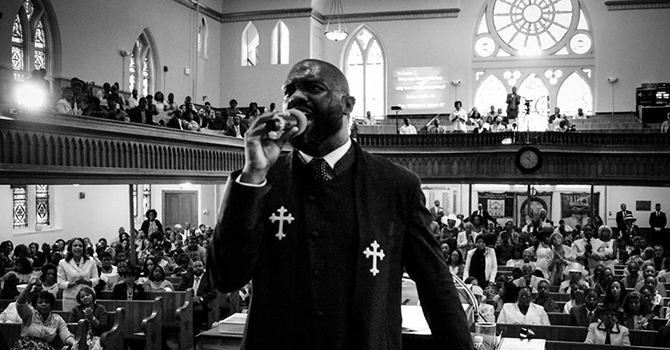
The Rev. William H. Lamar IV preaching. Photo by Paul Holston, Tru1 Photography
Yeah, he said that.
I am a preacher. So as I dust the COVID-19 crime scene, I am ultimately in search of theological fingerprints.
What kind of God-talk makes possible a refusal to provide the universal health care that may have mitigated this crisis? What kind of God-talk makes possible a refusal to invest the money necessary to end homelessness? What kind of God-talk makes possible the racializing of criminality and poverty? What kind of God-talk gives political power to science-denying policymakers?
The answer? White evangelical God-talk. The injustices that many communities are experiencing as a result of the novel coronavirus are inextricably linked to this theology. The evidence is irrefutable.
Political systems require a theological system. Constantine glommed onto Christianity to strengthen Rome. The French, British and Dutch empires all used the signs and symbols of Christianity to plunder and to pillage. Norman Vincent Peale and Billy Graham were largely quiescent in the face of American warmongering abroad and racialized violence at home. (Integrating revivals is hardly enough.)
From what I can see, their purpose was access to power, not its conversion to the ways of Jesus. Even Vladimir Putin deploys the deep, symbolic well of Russian Orthodoxy to strengthen his dictatorial machinations.
If you were educated in the United States there’s a huge chance you know absolutely nothing about the European colonization of Asia. This is something I slowly learned about in my research into Buddhist history. Most Americans would be shocked today if they learned the full story of how Christian missions and European financial interests worked together to subjugate Asian peoples, destroy their cultures, and loot their resources. The same thing happened in Africa and in the Americas, of course.
The Rev. Mr. Lamar makes that connection also:
American white evangelicalism is the offspring of the religion of settler colonialists, and the raison d’etre of settler colonialism is to remove an existing population and replace it with another.
Settler colonialism is always violent, and it always has a theological system to support it.
The settlers who came to these shores were convinced that God was with them and that God commanded them to take what belonged to others. The idea that “what I survey I own” is deeply ingrained in white evangelicalism. Those who think, look or act differently are summarily marginalized, silenced and removed.
The fatal shooting of 25-year-old Ahmaud Arbery — chased down by two armed white men while jogging through their neighborhood — is just one recent example of this in action. And it’s why I argue that white evangelical theology’s settler colonial impulse fosters the conditions for the novel coronavirus to thrive.
Push black people onto islands of poverty and deny them health care, adequate housing and equal education. Keep them away. Send brown people, whether they were born in the United States or not, back home.
In the white evangelical imagination, certain bodies will never belong. This is why Mr. Trump knew that birtherism and calling Mr. Obama a Muslim would catapult him to white evangelical prominence even though he does not hold to its purported moral code.
Owning space and controlling bodies has always been more important than personal morality in that imagination.
I’ve never seen it expressed more clearly. Amen, Rev. Lamar. Do read his entire essay.
Now, let’s go back to Donald Trump and his Bible stunt. McKay Coppins writes at The Atlantic:
He wielded the Bible like a foreign object, awkwardly adjusting his grip as though trying to get comfortable. He examined its cover. He held it up over his right shoulder like a crossing guard presenting a stop sign. He did not open it.
“Is that your Bible?” a reporter asked.
“It’s a Bible,” the president replied.
Even by the standards of Donald Trump’s religious photo ops, the dissonance was striking. Moments earlier, he had stood in the Rose Garden and threatened to unleash the military on unruly protesters. He used terms such as anarchy and domestic terror, and vowed to “dominate the streets.” To clear the way for his planned post-speech trip to St. John’s Church, police fired tear gas and rubber bullets into a crowd of peaceful demonstrators.
And how are white evangelicals receiving this news?
A few hours after the dystopian spectacle, I spoke on the phone with Robert Jeffress, a Dallas megachurch pastor and indefatigable Trump ally. He sounded almost gleeful.
“I thought it was completely appropriate for the president to stand in front of that church,” Jeffress told me. “And by holding up the Bible, he was showing us that it teaches that, yes, God hates racism, it’s despicable—but God also hates lawlessness.”
“So,” he added, “I’m happy.”
In many ways, the president’s stunt last night—with its mix of shallow credal signaling and brutish force—was emblematic of his appeal to the religious right. As I’ve written before, most white conservative Christians don’t want piety from this president; they want power. In Trump, they see a champion who will restore them to their rightful place at the center of American life, while using his terrible swift sword to punish their enemies.
“I don’t know about you but I’ll take a president with a Bible in his hand in front of a church over far left violent radicals setting a church on fire any day of the week,” wrote David Brody, a news anchor at the Christian Broadcasting Network. (Trump selected St. John’s, which has hosted presidents since James Madison for worship services, because protesters had set a fire in its nursery the night before.)
“I will never forget seeing [Trump] slowly & in-total-command walk … across Lafayette Square to St. John’s Church defying those who aim to derail our national healing by spreading fear, hate & anarchy,” wrote Johnnie Moore, the president of the Congress of Christian Leaders.
In an email to me, Ralph Reed, the chairman of the Faith and Freedom Coalition, heaped praise on Trump for his visit: “His presence sent the twin message that our streets and cities do not belong to rioters and domestic terrorists, and that the ultimate answer to what ails our country can be found in the repentance, redemption, and forgiveness of the Christian faith.”
It’s possible these people didn’t know about the Rev. Gini Gerbasi, with her pink sweater and gray hair in a ponytail, being tear-gassed by police in advance of the photo op. It’s also possible that if they did know about it, they wouldn’t care. I am a child of the Bible Belt, and back in the day the evangelicals and pentacostals were clearly hostile to the “old church” denominations, especially Catholics but also mainline protestants such as Episcopalians. The older denominations that practiced infant baptism were not “real Christians,” they said. In my childhood I thought all people were separated into the sprinkled or the dunked.
We could spend hours reviewing the many ways Christianity in the U.S. has supported and affirmed the subjugation of nonwhite people, although we shouldn’t forget the other Christianities that stood against racism. Yes, antebellum Christian ministers in the South preached that slavery was part of God’s Plan, whatever that was, but at the same time northern evangelicals were leaders of the abolitionist movement. In the early part of the 20th century the Ku Klux Klan was tightly aligned with the white Christian fundamentalist movement. The “Religious Right” that helped elect Ronald Reagan in 1980 and continues to support Republican politicians like Donald Trump emerged from opposition to desegregation in the 1960s and 1970s. These people never spoke for all Christians, however.
So I don’t doubt that, deep down, white evangelical leaders were just fine with the way Trump rolled over peaceful black demonstrators, and if some Episcopalian clergy got tear-gassed along the way, who gives a bleep?
I wrote back in 2007,
Without strict limits on the power of sectarian religion, liberal democracy cannot survive. Either religious strife will pull it apart, or else a dominant religious faction will take over and render government more authoritarian and intolerant of diversity. And that includes religious diversity. … For a democratic republic, toleration of religious totalitarianism amounts to a suicide pact.
Certainly, democracies don’t need to be hostile to religion. But those religious organizations that work to destroy democracy need to be dealt with as any other organization that wishes to destroy democracy. They are enemies, and sometimes they are terrorists.
Trump is stupidly playing with forces he doesn’t fully understand, but I’m sure he doesn’t care. It’s all about his re-election now. If he can be re-elected by dragging the original Constitution out of the display case at the National Archives and putting it through a shredder, he would do it. If he can be re-elected by declaring national martial law and arresting every Democrat in Congress, he would do it. He doesn’t care about democracy or Christianity or anything else except his own sorry-ass self.
And that makes him the enemy, too.
McCay Coppins wrote, “To Trump, the Bible and the church are not symbols of faith; they are weapons of culture war.” Yes, and they are increasingly symbols of his political power. And, as we’ve seen, many Trump supporters also employ symbols of the Third Reich and the Confederacy, which also stand for white supremacy. Because it’s all linked together in that culture war.
At this point the “Christianity” that supports Trump is utterly incompatible with Jesus’ teaching and is little more than a front for white supremacy and a grab bag of other right-wing causes, such as the subjugation of women and discrimination against LBGTQ people. Yet many Christian clergy who oppose the white evangelicals have been reluctant to call them out for their obvious apostasy. That may change now. The fallout from Trump’s Bible stunt is still developing; many Christian clergy are outraged by it. Trump may have overplayed his hand.
Update: Today, the day after having Episcopal clergy and seminarians tear gassed, Trump visited a shrine to Pope John Paul II ostensibly to make a statement about religious liberty. The shrine is maintained by the Knights of Columbus, who may have approved the visit — they haven’t said — but the Washington Archbishop is mightily pissed off.
President Trump triggered sharp condemnation from top religious leaders for the second time in two days on Tuesday, with Washington Archbishop Wilton Gregory slamming his visit to a D.C. shrine honoring Pope John Paul II.
On Monday, Trump’s appearance in front of St. John’s Episcopal Church across from the White House set off a controversy because it involved aggressively clearing peaceful protesters.
“I find it baffling and reprehensible that any Catholic facility would allow itself to be so egregiously misused and manipulated in a fashion that violates our religious principles, which call us to defend the rights of all people, even those with whom we might disagree,” Gregory said in a statement as Trump and first lady Melania Trump arrived at the Saint John Paul II National Shrine in Northeast Washington. …
…In his statement, Gregory noted the legacy of Pope John Paul II, suggesting he would not have condoned Trump’s actions, including his walk to St. John’s as hundreds of demonstrators were protesting the death of George Floyd last week in the custody of the Minneapolis police.
“Saint Pope John Paul II was an ardent defender of the rights and dignity of human beings. His legacy bears vivid witness to that truth,” Gregory said. “He certainly would not condone the use of tear gas and other deterrents to silence, scatter or intimidate them for a photo opportunity in front of a place of worship and peace.” …
… In a statement, the shrine said that the White House originally scheduled the visit as an event for the president to sign an executive order on international religious freedom, but the president did not make any remarks during his visit.
This is from a Jesuit website:
Some Catholic leaders took to social media to critique Mr. Trump’s visit.
“As Trump visits the St John Paul II National Shrine today, I hope someone proclaims today’s Gospel (Mark 12:13-17) where Herodians and Pharisees are called out for their hypocrisy,” Bishop John Stowe of Lexington, Ky., tweeted Tuesday morning.
Sister Simone Campbell, who heads the social justice lobbying group Network, said in a statement: “President Trump is now using the Catholic faith in another photo op to defend his appalling refusal to address racism and police violence in the United States. He is trying to create a false dichotomy of peaceful protestors versus the Church. That could not be further from the truth, and any Christian who believes it does not understand Jesus’s message.”
I thought the first rule of Catholicism is “don’t piss off nuns.” See also Trump Drives Through Sea Of Middle Fingers And ‘Bunker Bitch’ Signs On Way To Photo-Op.
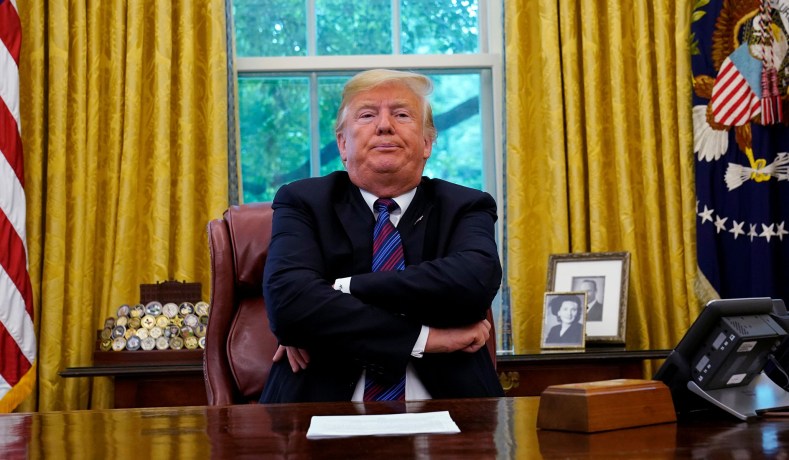

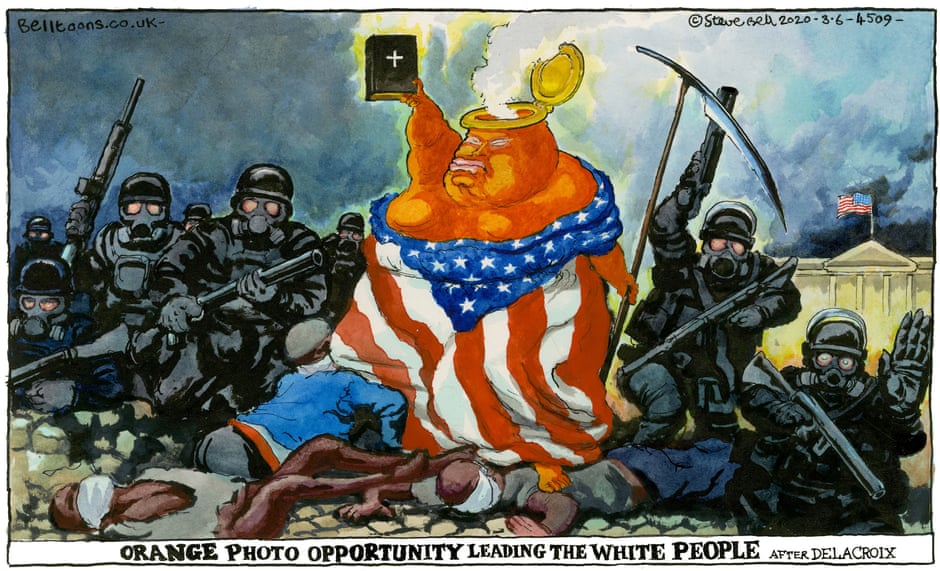
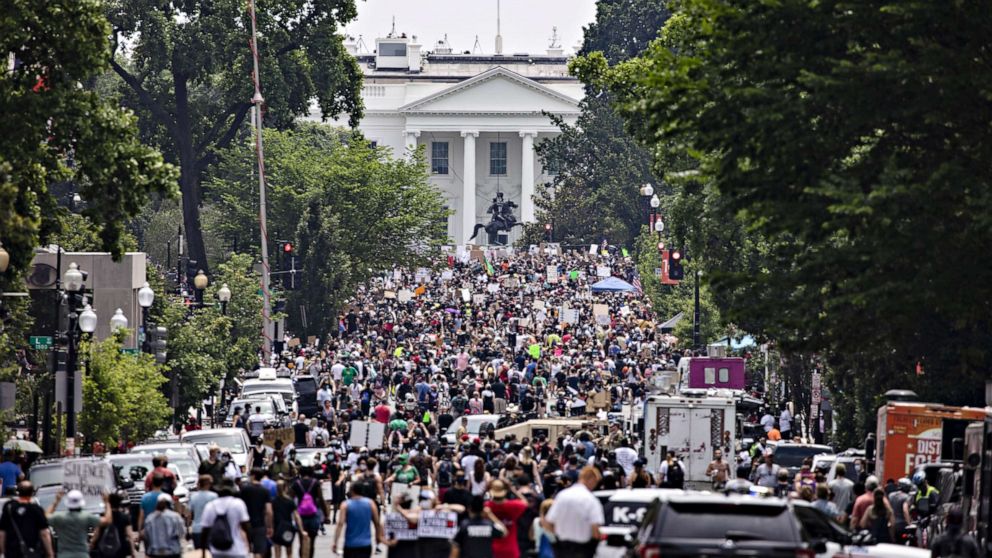
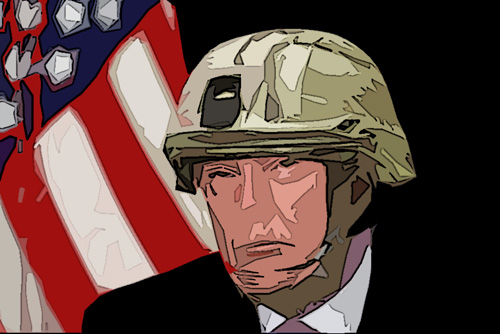
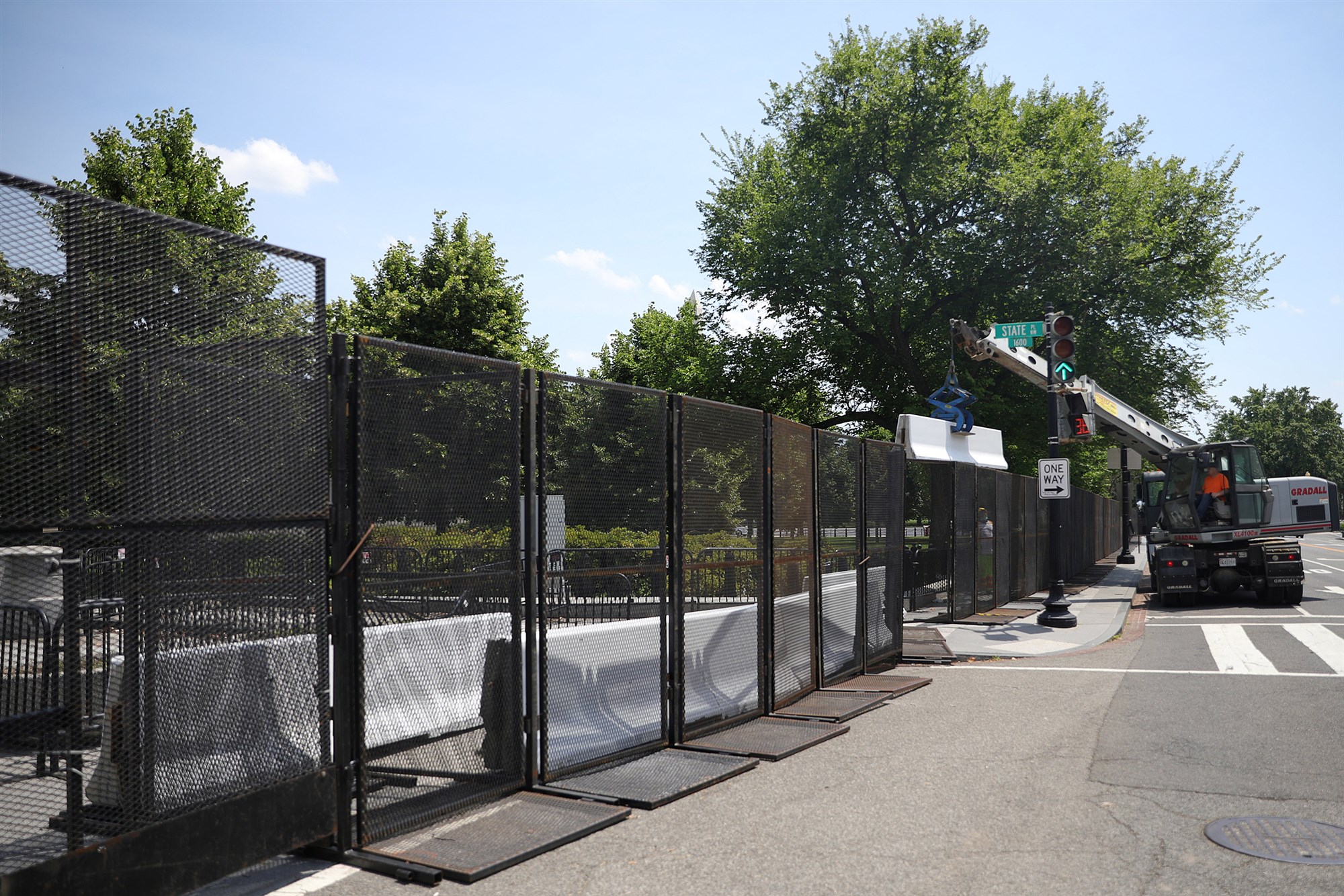
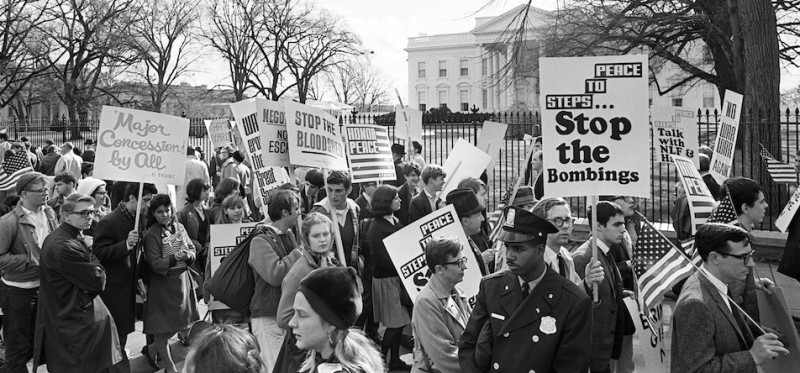
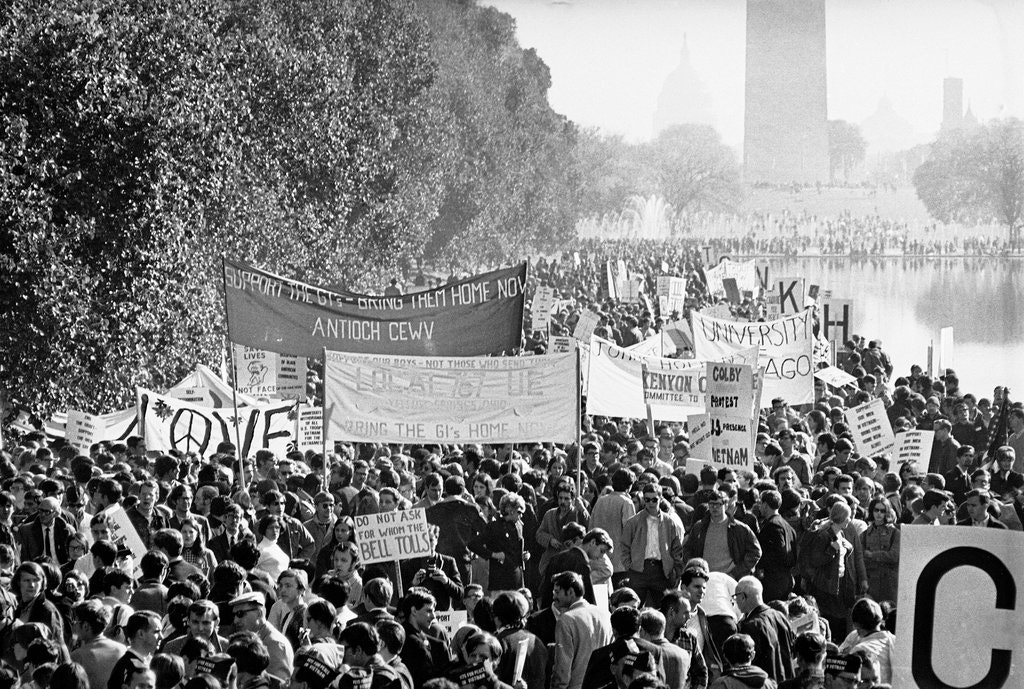

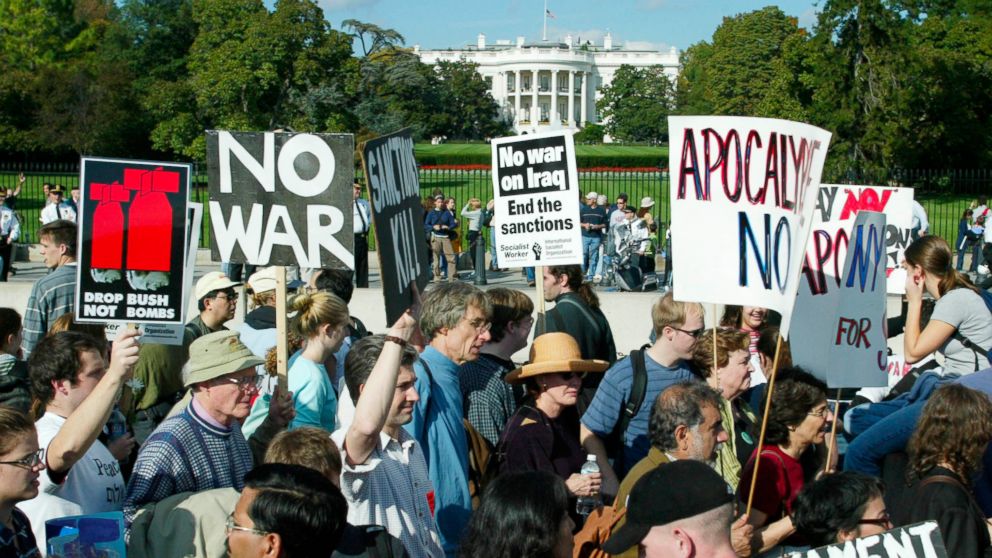
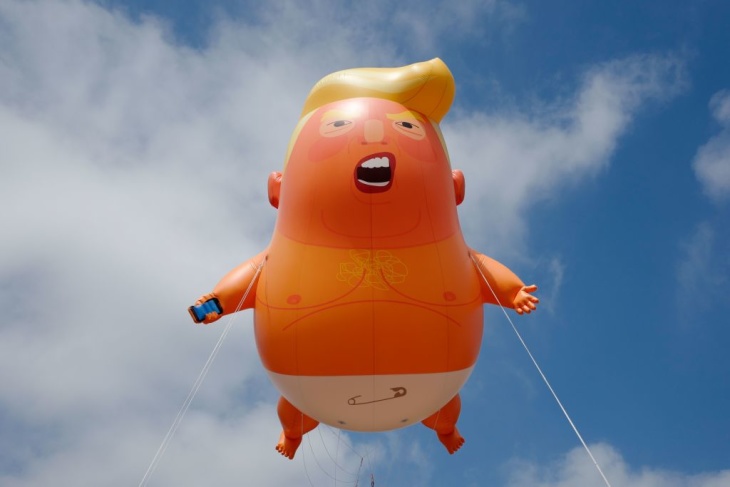
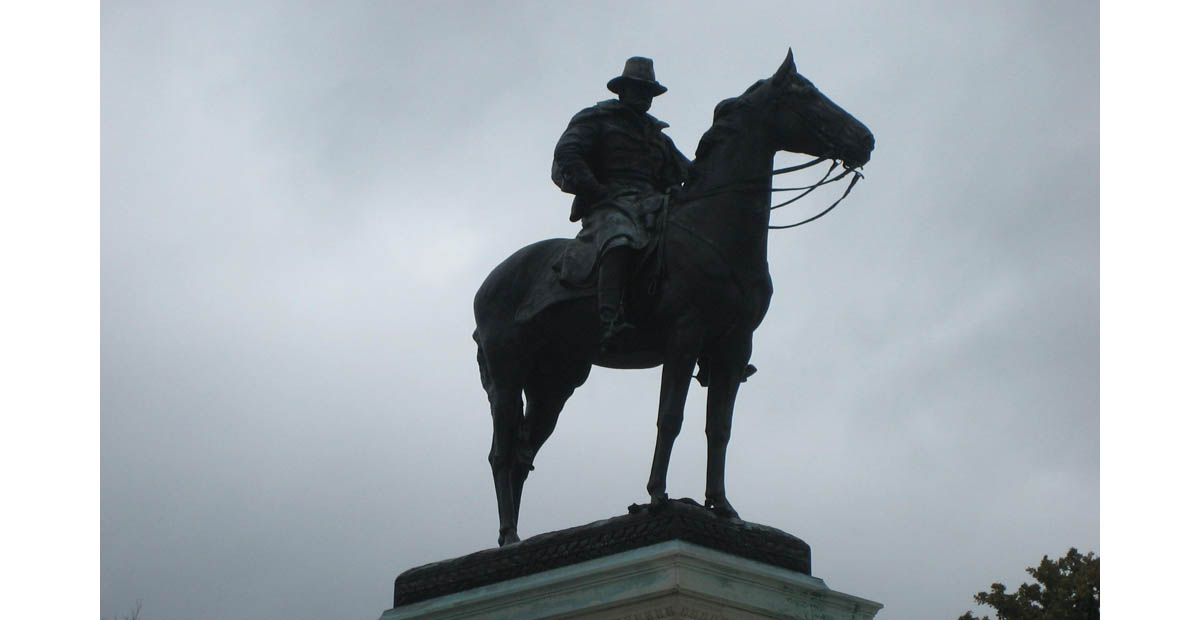

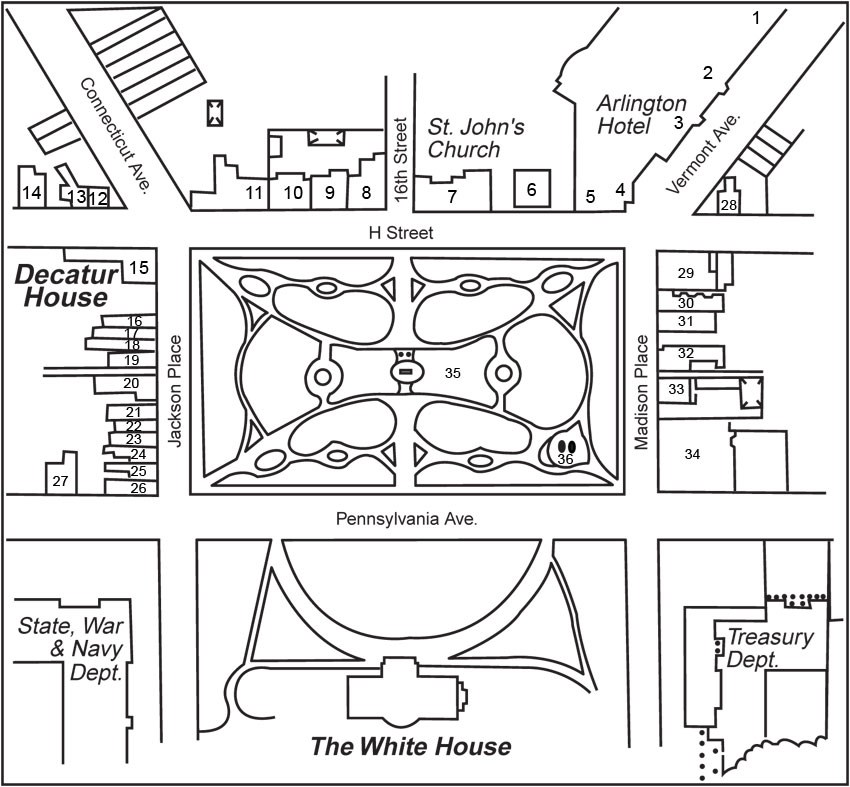 The plan was to have Trump give a statement in the Rose Garden a bit after 6 pm and then walk to St. John’s with the press corps looking on. But the presence of protesters in the park was a problem. Attorney General Bill Barr was given the job of clearing the park of protesters, because we can’t have Mr. Tough Guy seen in the vacinity of peaceful protesters, can we? From the New York Times:
The plan was to have Trump give a statement in the Rose Garden a bit after 6 pm and then walk to St. John’s with the press corps looking on. But the presence of protesters in the park was a problem. Attorney General Bill Barr was given the job of clearing the park of protesters, because we can’t have Mr. Tough Guy seen in the vacinity of peaceful protesters, can we? From the New York Times:
